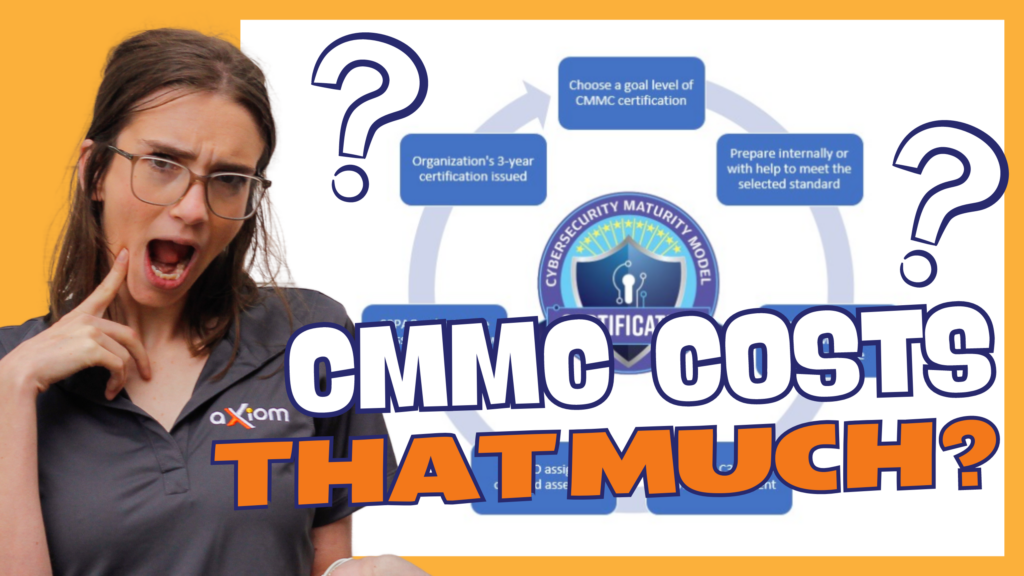
Cybersecurity is a critical concern for businesses today, especially with the rise in cyber threats targeting sensitive data. The Cybersecurity Maturity Model Certification (CMMC) Level 2 offers a structured approach for small to midsize businesses (SMBs) to bolster their cyber defenses and safeguard sensitive information.
However, navigating the costs associated with CMMC Level 2 compliance can be a daunting task. Let’s delve deeper into understanding the costs and practical strategies to manage them effectively.
A Comprehensive Insight Into CMMC Level 2 Requirements
CMMC Level 2 stands as a critical tier within the Cybersecurity Maturity Model Certification, charting a meticulous blueprint for increased protection of Controlled Unclassified Information (CUI). At its core, this tier delineates a set of meticulous security practices crafted to safeguard sensitive data from potential cyber threats.
With an overarching emphasis on resilience and fortification, CMMC Level 2 focuses on foundational cybersecurity measures, constituting a robust defense line against unauthorized access, data breaches, and vulnerabilities. These practices span various facets of cybersecurity, involving access controls, encryption protocols, incident response, and ongoing monitoring strategies.
Unveiling the Crucial Role of CMMC Compliance for SMBs
The compelling need for CMMC compliance among small to midsize businesses (SMBs) is multifaceted and crucial for fostering a secure and credible operational landscape.
Primarily, compliance serves as a safeguard, offering a robust shield to sensitive data repositories integral to business operations. Beyond this protective mantle, achieving compliance stands as a prerequisite for SMBs aiming to secure government contracts.
Additionally, compliance plays a pivotal role in bolstering the credibility and trust factor among partners, clients, and stakeholders. Demonstrating adherence to CMMC standards not only signifies a commitment to safeguarding sensitive information but also underscores reliability and integrity.
Understanding the Varied Costs Associated with CMMC Compliance
Achieving CMMC Level 2 compliance incurs diverse costs contingent on multiple factors:
- Scoping the Requirements: The scope of compliance, encompassing systems, processes, and personnel handling CUI, significantly influences cost estimation.
- Leveraging NIST 800-171 Standards: Businesses already compliant with NIST 800-171 standards might find themselves ahead in readiness, potentially reducing compliance costs.
- Prior Security Measures: Investments made in previous security measures aligning with CMMC requirements can mitigate costs, diminishing the need for extensive overhauls.
- Technology Implementation: Costs related to licensing, deployment, and user training for technologies like Multi-Factor Authentication (MFA), endpoint protection, antivirus solutions, and other security measures form a substantial part of compliance expenses.
- Consultant and Assessor Fees: Engaging consultants and assessors for guidance and certification can constitute a significant portion of compliance costs.
Strategies for Cost-Effective CMMC Level 2 Compliance Management
1. Conducting a Comprehensive Self-Assessment
Initiate compliance endeavors with a thorough internal assessment to identify gaps, prioritize essential measures, and streamline compliance efforts. Not sure where to start? NIST has published an assessment guide for the requirements under NIST SP 800-171 (the foundation of CMMC) that should be used in your self-assessment.
2. Implementing Foundational Security Measures
Enforce robust password policies, endpoint security measures, access controls, and encryption protocols aligned with CMMC standards to minimize technology overhaul costs. This transcends technology into business operations too. Be sure to implement your core business policies (acceptable use, security awareness training, and more) to help foster a CMMC ready culture within the business.
3. Effective Management of Consulting Fees
Establish clear communication, define project scopes, negotiate fee structures, and engage with consultants offering tailored packages to optimize costs while ensuring quality guidance.
4. Selecting Affordable Technologies
Research and select cost-effective technology solutions that fulfill CMMC requirements without exerting undue strain on the budget. However, this isn’t as straightforward as it seems. CMMC has numerous requirements governing the use of this technology and an organization should engage with technology providers who can fulfill these requirements to get the most out of these investments.
5. Leveraging Internal Expertise and Resources
Let’s face it – your employees understand your organization better than any consultant ever will. However, CMMC is a daunting undertaking. Consider identifying key individuals in your organization who can help shepherd the journey within your organization while allowing them the flexibility to work with any 3rd party consultants. You may have to maximize your investment.
6. Beware the Sunk Cost Fallacy
Achieving CMMC compliance takes an investment of time and capital. It can be very easy, especially early on for an organization to invest a considerable sum in a technology or process only to find that the tech or process doesn’t work as designed. In these instances, don’t be afraid to throw in the towel and pivot to a new strategy. Furthermore, if your business doesn’t already have existing CMMC obligations, business leaders should take the time to decide whether the benefits of CMMC compliance outweigh the costs.
Ensure Your Business’s CMMC Compliance with Axiom’s Help
In the quest for CMMC Level 2 compliance, managing costs while fortifying cybersecurity measures is pivotal. Axiom offers tailored guidance and strategies designed specifically for SMBs navigating compliance challenges.
Contact us today to achieve cost-efficient CMMC compliance and fortified cybersecurity.